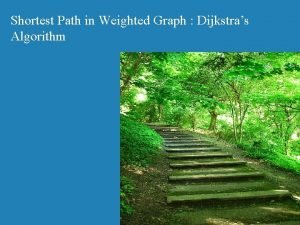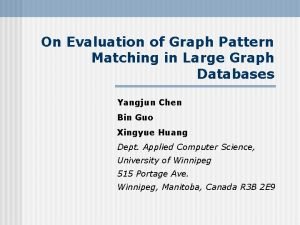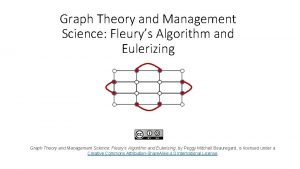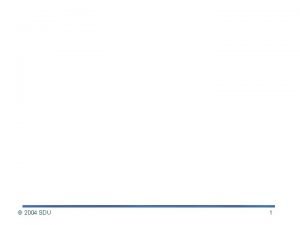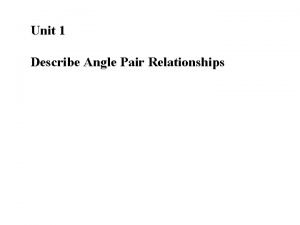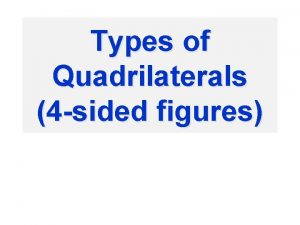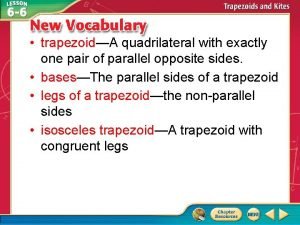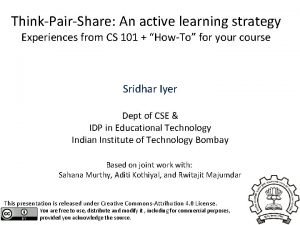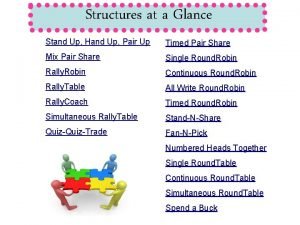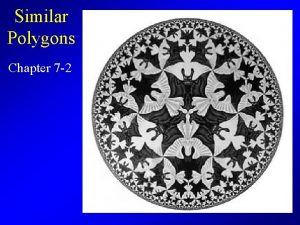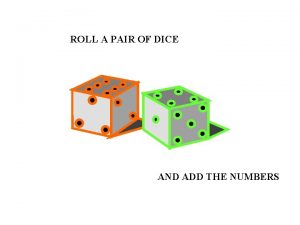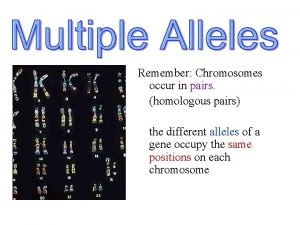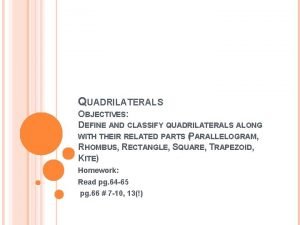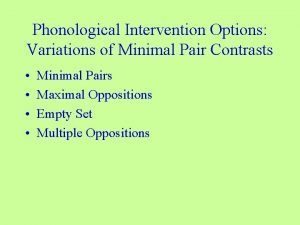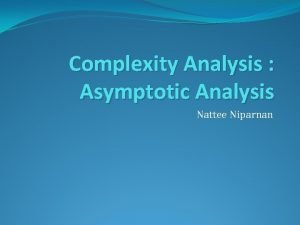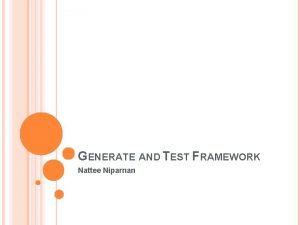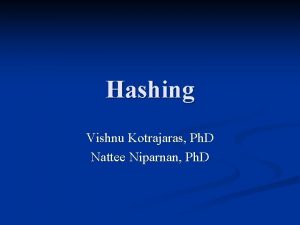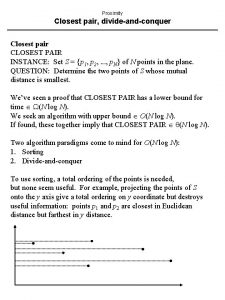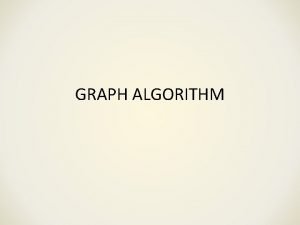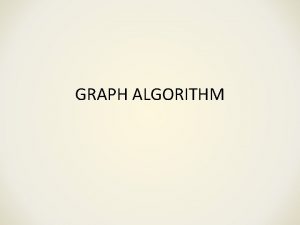Nattee Niparnan GRAPH ALGORITHM Graph A pair G

















![Solution Define global variable cc In previsit() ccnum[v] = cc Before calling each explore Solution Define global variable cc In previsit() ccnum[v] = cc Before calling each explore](https://slidetodoc.com/presentation_image/3ed79cbc635eb580e31f65502afcd744/image-18.jpg)
![Ordering in Visit procedure previsit(v) pre[v] = clock + 1 procedure postvisit(v) post[v] = Ordering in Visit procedure previsit(v) pre[v] = clock + 1 procedure postvisit(v) post[v] =](https://slidetodoc.com/presentation_image/3ed79cbc635eb580e31f65502afcd744/image-19.jpg)
![Ordering in Visit • The interval for node u is [pre(u), post(u)] • The Ordering in Visit • The interval for node u is [pre(u), post(u)] • The](https://slidetodoc.com/presentation_image/3ed79cbc635eb580e31f65502afcd744/image-20.jpg)








- Slides: 28

Nattee Niparnan GRAPH ALGORITHM

Graph A pair G = (V, E) V = set of vertices (node) E = set of edges (pairs of vertices) 2 1 3 4 V = (1, 2, 3, 4, 5, 6, 7) E= ((1, 2), (2, 3), (3, 5), (1, 4), ( 4, 5), (6, 7)) 6 5 7

Term you should already know directed, undirected graph Weighted graph Bipartite graph Tree Spanning tree Path, simple path Circuit, simple circuit Degree

Representing a Graph Adjacency Matrix A = |V|x|V| matrix �axy = 1 when there is an edge connecting node x and node y �axy = 0 otherwise 1 2 3 4 5 2 1 3 4 5 1 2 3 0 1 0 1 1 0 0 1 4 5 1 1 0 0 1 1 0

Representing a Graph Adjacency List Use a list instead of a matrix For each vertex, we have a linked list of their neighbor 2 1 3 4 5 1 2 4 2 1 3 . . . 4

Representing a Graph Incidences Matrix Row represent edge Column represent node 2 1 3 4 5 1 2 3 4 5 1 1 0 0 0 1 0 0 1 1 0 0 0 1 1

Exploring a Maze

Exploring Problem Input: A Graph �Maybe as an adjacency matrix A Starting node Output: List of node reachable from v �Maybe as an array indexed by a node

Depth-First-Search procedure explore(G; v) // Input: G = (V; E) is a graph; v V // Output: visited(u) is set to true for all nodes u reachable from v { visited(v) = true previsit(v) for each edge (v, u) E if not visited(u) explore(u) postvisit(v) }

Example Explore(A)

Extend to Graph Traversal is walking in the graph We might need to visit each component in the graph Can be done using explore Do “explore” on all non-visited node The result is that we will visit every node What is the difference between just looking into V (the set of vertices? )

Graph Traversal using DFS procedure dfs(G) { for all v V visited(v) = false for all v V if not visited(v) explore(v) }

Complexity Analysis Each node is visited once Each edge is visited twice Why? O( |V| + |E|)

Another Example

Another Example

Connectivity in Undirected Graph If can reach Then �Also && can reach Divide into smaller subset of vertices that can reach other

Connected Component Problem Input: A graph Output: Marking in every vertices identify the connected component �Let it be an array ccnum, indexed by vertices
![Solution Define global variable cc In previsit ccnumv cc Before calling each explore Solution Define global variable cc In previsit() ccnum[v] = cc Before calling each explore](https://slidetodoc.com/presentation_image/3ed79cbc635eb580e31f65502afcd744/image-18.jpg)
Solution Define global variable cc In previsit() ccnum[v] = cc Before calling each explore cc++
![Ordering in Visit procedure previsitv prev clock 1 procedure postvisitv postv Ordering in Visit procedure previsit(v) pre[v] = clock + 1 procedure postvisit(v) post[v] =](https://slidetodoc.com/presentation_image/3ed79cbc635eb580e31f65502afcd744/image-19.jpg)
Ordering in Visit procedure previsit(v) pre[v] = clock + 1 procedure postvisit(v) post[v] = clock + 1
![Ordering in Visit The interval for node u is preu postu The Ordering in Visit • The interval for node u is [pre(u), post(u)] • The](https://slidetodoc.com/presentation_image/3ed79cbc635eb580e31f65502afcd744/image-20.jpg)
Ordering in Visit • The interval for node u is [pre(u), post(u)] • The inverval for u, v is either • Contained • disjointed • Never intersect

DFS in Directed Graph

Type of Edge in Directed Graph

Directed Acyclic Graph (DAG) A directed Graph without a cycle Has “source” �A node having only “out” edge Has “sink” �A node having only “in” edge How can we detect that a graph is a DAG What should be the property of “source” and “sink” ?

Solution A directed graph is acyclic if and only if it has no back edge Sink Having lowest post number Source Having highest post number

Linearization of Graph for DAG, we can have an ordering of node Think of an edge as Causality Time-dependency � means has to be done before Linearization ordering of node by causality

Linearization One possible linearization B, A, D, C, E, F Order of work that can be done w/o violating the causality constraints

Topological Sorting Problem Input: A DAG (non-dag cannot be linearized) Output: A sequence of vertices �If we have a path from to � must come before in the sequence

Topological Sorting Do DFS List node by post number (descending) 3, 8 4, 5 2, 9 6, 7 1, 12 10, 1
 Armure sergé 2/2
Armure sergé 2/2 Unordered set of pairs
Unordered set of pairs Rolling pair is higher pair
Rolling pair is higher pair Difference between a star and ao star algorithm
Difference between a star and ao star algorithm Adri wessels
Adri wessels Dijkstra algorithm
Dijkstra algorithm Graph pattern matching algorithm
Graph pattern matching algorithm Fleurys algorithmus
Fleurys algorithmus Semiconnected graph
Semiconnected graph Bridge graph
Bridge graph Wait-for graph
Wait-for graph Think pair share example
Think pair share example Kagan math
Kagan math Two angles whose sides form two pairs of opposite rays. *
Two angles whose sides form two pairs of opposite rays. * Quadrilateral with 1 pair of parallel sides
Quadrilateral with 1 pair of parallel sides If bcde is a kite
If bcde is a kite Pair and share activity
Pair and share activity Thevideo pair
Thevideo pair Stand up handup pair up strategy
Stand up handup pair up strategy Think pair share poster
Think pair share poster Scissors fulcrum
Scissors fulcrum 7-2 similar polygons
7-2 similar polygons Ab3e2
Ab3e2 Roll a pair of dice
Roll a pair of dice What are like parallel forces
What are like parallel forces Homologous chromosomes pair
Homologous chromosomes pair Rules of quadrilaterals
Rules of quadrilaterals Assimilation in phonetics
Assimilation in phonetics Minimal pairs examples
Minimal pairs examples





